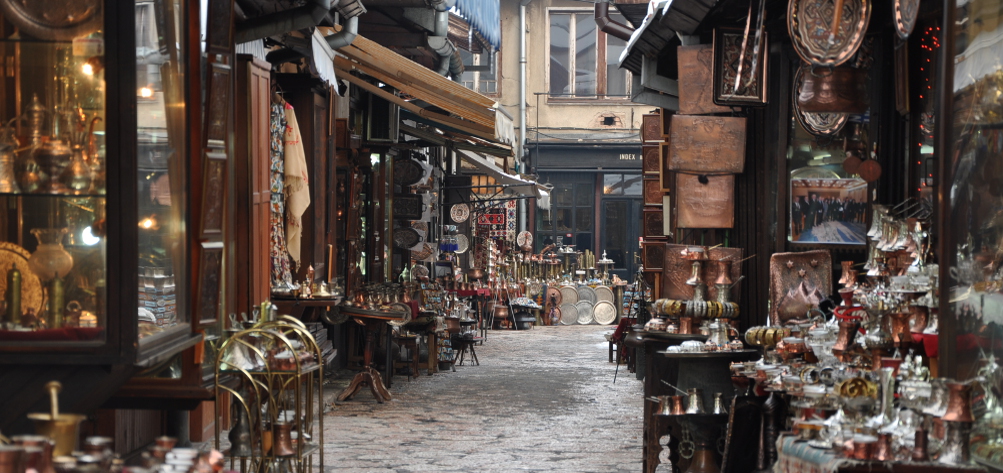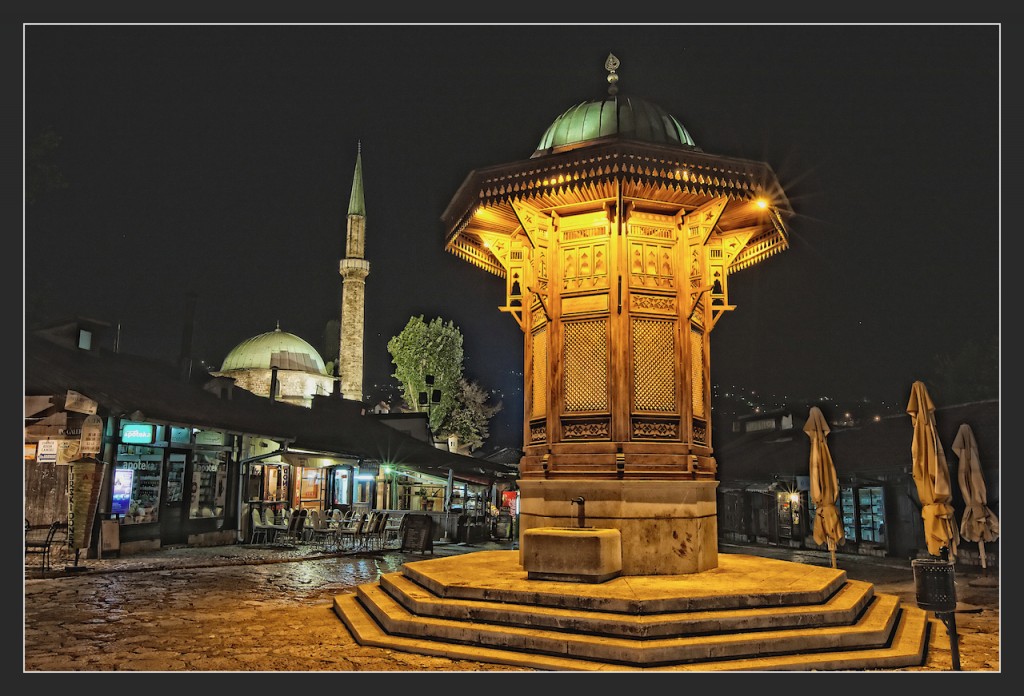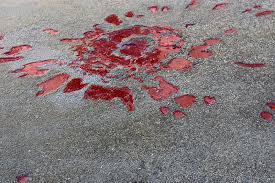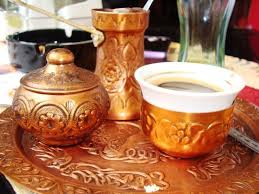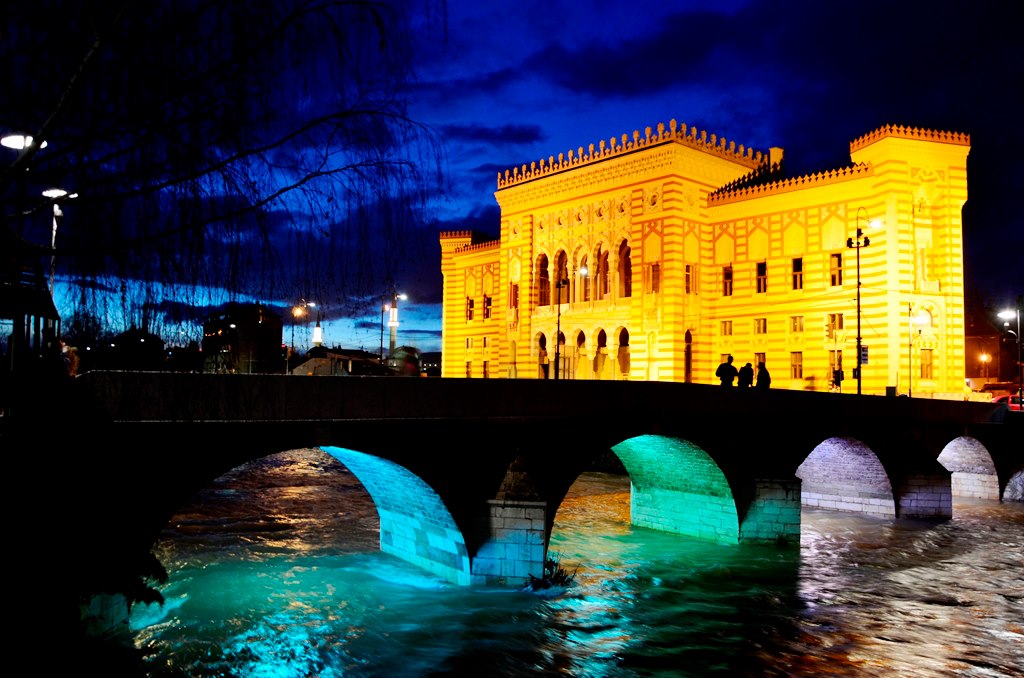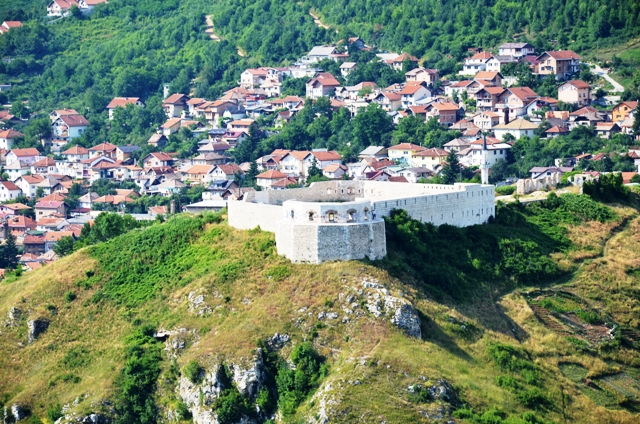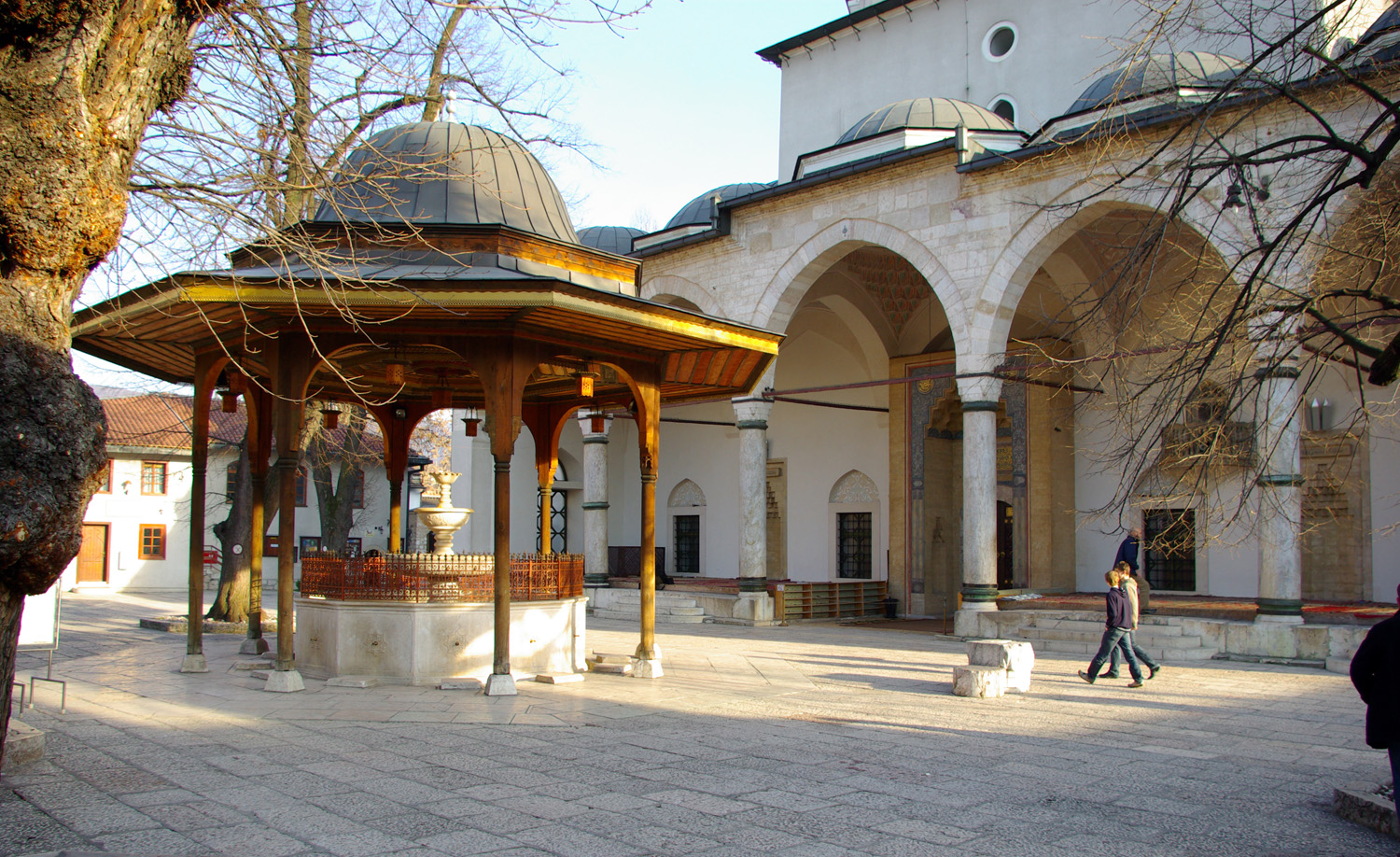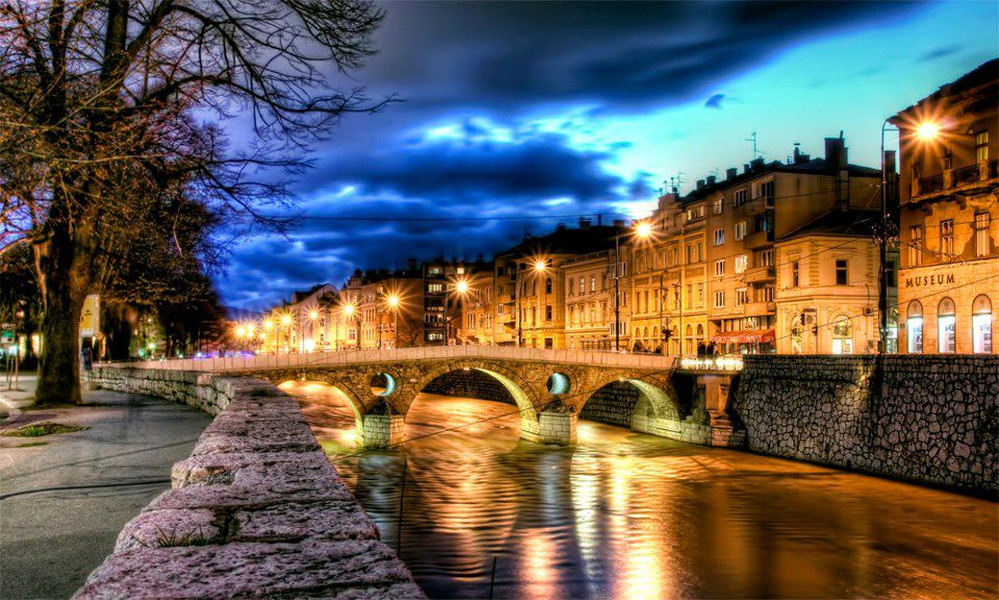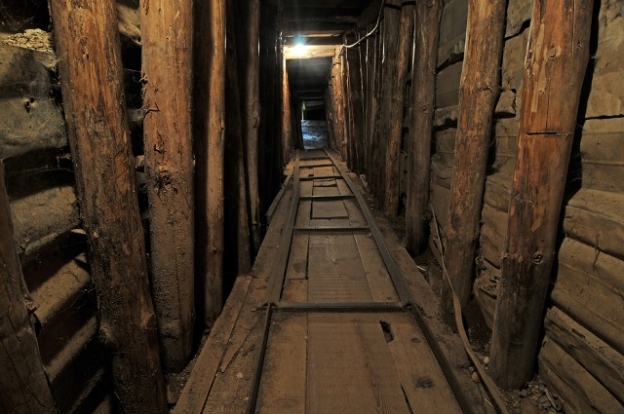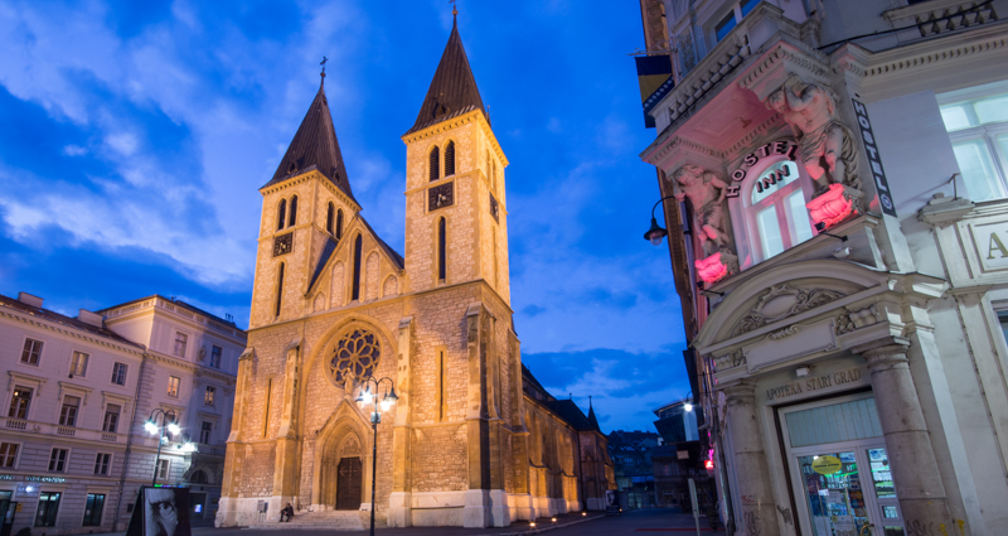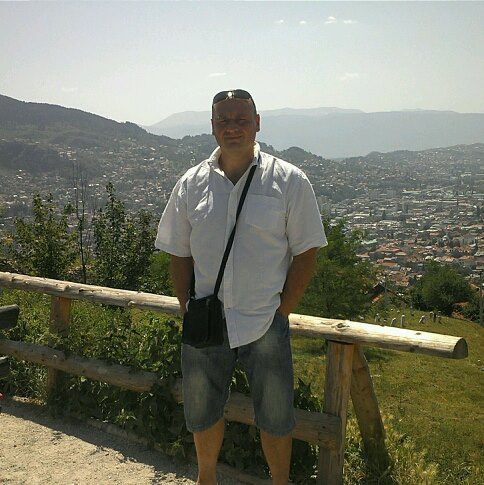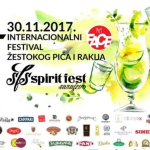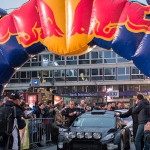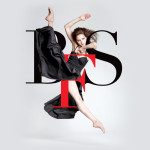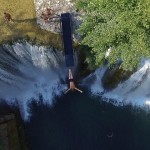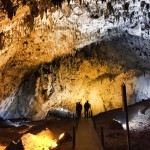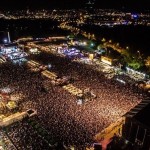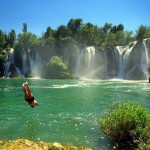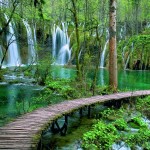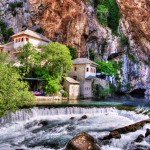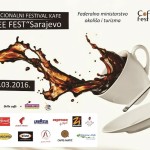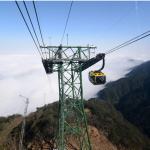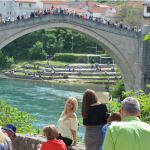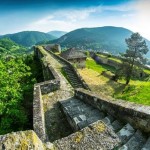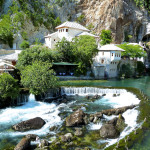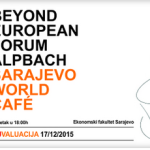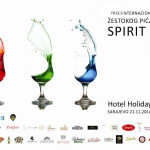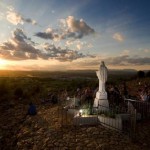Most people the word “Bosnia” associated with the war that took place in the nineties this country, and in addition, most people do not know anything about this mysterious land. For this reason, visits to the country a unique experience that opens your eyes. In this exotic country located in southeastern Europe, there are 40 percent Muslim, 31 percent Orthodox and 15 percent of Catholics.
In Bosnia and Herzegovina overlap, the Muslim and Christian architecture. The main city of Sarajevo’s cultural center of the Balkans, which is rich religious and cultural diversity. The followers of Islam, Orthodoxy, Christianity and Judaism have lived together in this city for centuries, which is why Sarajevo merit the name of Jerusalem of Europe.
Sarajevo, which lies in a valley between five mountains – Bjelasnica, Jahorina, Igman, Treskavica and Trebevic, was the first city in Europe which in 1885 got electric tram, and there were a host of the Olympic Games in 1984.
The scars of the siege in the period from 1992 to 1995, which marked the longest siege in modern history that lasted 1425 days, are still present in Sarajevo. The holes in the facades of the buildings still remind us of the cruelty of war and its effect on people.
Sarajevo is a fascinating city – get ready to leave you breathless with its diversity and friendly people. Sarajevo is an overlay of eastern and western cultures. In town, you can see traces of the Eastern Byzantine and Ottoman Empire and Western Roman, Venetian and Austro-Hungarian Empire.
The architecture of the Ottoman Empire exists with the Austrian, as well as Christian and Jewish buildings. In the city you can hear the mix calls for prayers from the minarets of mosques, which Muslims call for prayer and church bells. For a moment you wonder whether in Europe or the Orient.
Baščaršija
Baščaršija is Sarajevo’s old bazaar and the historical and cultural center of the city. It was built in the 15th century, when Isa Bey Ishakovic founded and the entire city. The word “just” in Turkish means “main”, so Bašèaršija means “main street”. Due to the great fire in the 19th century, today’s Baščaršija is twice less than it used to be. Communist authorities wanted to completely destroy the 1940s, believing that the old trade center does not have a role in the modern city, but scrapped the plan.
Bascarsija is located on the north bank of the river Miljacka, in the municipality of Stari Grad Sarajevo. It has a number of important historical buildings. Today is a major tourist attraction of the city of Sarajevo, where they are the oldest streets in Sarajevo, which abound craft shops … The Baščaršiji can eat kebabs and baklava and drinking Turkish coffee.
Sebilj
Sebilj is a wooden fountain made in pseudootomanskom style in the center of Bascarsija in Sarajevo, which was built by Bosnian vizier Mehmed-pasha Kukavica 1753. The Sebilj was a little lower than today and burned in a fire in 1852, and then was moved by the Czech architect Alexander Vitek in 1891. This part is also called the “Square of pigeons”.
Sarajevo Roses
Sarajevo Roses are symbolic places or footprints in concrete incurred by the explosion of a grenade during the aggression on Bosnia and Herzegovina. Every shell that exploded on the road or paved trail left behind a crater-shaped flowers, which after the war fulfilled in red, as a monument to the suffering.
Bosnian coffee
Although Bosnians were under the Ottoman Empire for centuries, they never call my coffee not Turkish. In fact, Bosnians considered an insult if you say that the Bosnian coffee in fact Turkish coffee. Bosnians have a special relationship with his coffee, which is part of their identity. On Baščaršija you can drink Bosnian coffee from copper dzezvas with fildžan with sugar cubes.
Town hall
City Hall is located in Sarajevo, close to Baščaršija on Mustaj Pasha mejdan and represents the most beautiful and representative object from the Austro-Hungarian period, built in pseudo-Moorish style. In this style made the most of the facilities which were in Sarajevo left Austro-Hungarian rule, a synonym for the Austro-Hungarian period in Bosnia and Herzegovina and the trademark of the time.
White bastion
White bastion is a tower on the road Dariva – Moscanica, on the eastern peak elevation of Sarajevo valley. It was built on the site of a medieval fortress built around 1550. The upper part of the bastions in large stone blocks was built in the Austro-Hungarian period. The tower was of great importance for the defense of the city during the attack of the Austrian Prince Eugene of Savoy in the 17th century, and the Austro-Hungarian army in 1878. White bastion is located within the architectural ensemble of the Old Town Vratnik which was declared a National Monument of Bosnia and Herzegovina.
Gazi Husrev-Beg Mosque
Gazi Husrev-Beg Mosque, also known as Bey Mosque, was built in 1530 in Sarajevo and is considered one of the most important mosques in Bosnia and Herzegovina and the Balkans.
Latin Bridge
Latin Bridge is one of the most famous bridges in the city of Sarajevo. It was first mentioned in 1541 and the original bridge was very probably of timber. According to the census of the Bosnian Sandžak was built by Hussein, the son of a Širmerda. In 1565 we find the record that it is building in Sarajevo significant Aini Ali Bey stone. There is a clear indication that there is a stone bridge (tur. – Bridge).
Sarajevo Tunnel
Sarajevo Tunnel is the name for the tunnel, which was built during the siege of Sarajevo in 1993. The tunnel was built under the runway and connecting the two territories held by the BH Army (Dobrinja and Butmir) and hence the tunnel called “tunnel D-B”.
The tunnel is about 720 meters high and 1.5 m, while in some areas was as high as 1.8 meters. The tunnel in the official talks, ABH, and the UN led by the name “The tunnel which is not”. He was awarded the secret of Sarajevo, because they are using the tunnel in Sarajevo arrived food, weapons, cigarettes and so on.
Cathedral of the Sacred Heart
Cathedral of the Sacred Heart Cathedral of the same archbishopric and also the parish church of the eponymous parish. It is located in the Sarajevo municipality of Stari Grad, an attractive location to run the town’s main promenade. Since 1889, when the blessed, the center of spiritual life of Catholics in Sarajevo. It was built at the initiative of Archbishop Stadler, who in 1882, two years before the start of the building works, started to search for the perfect place to raise a cathedral.

